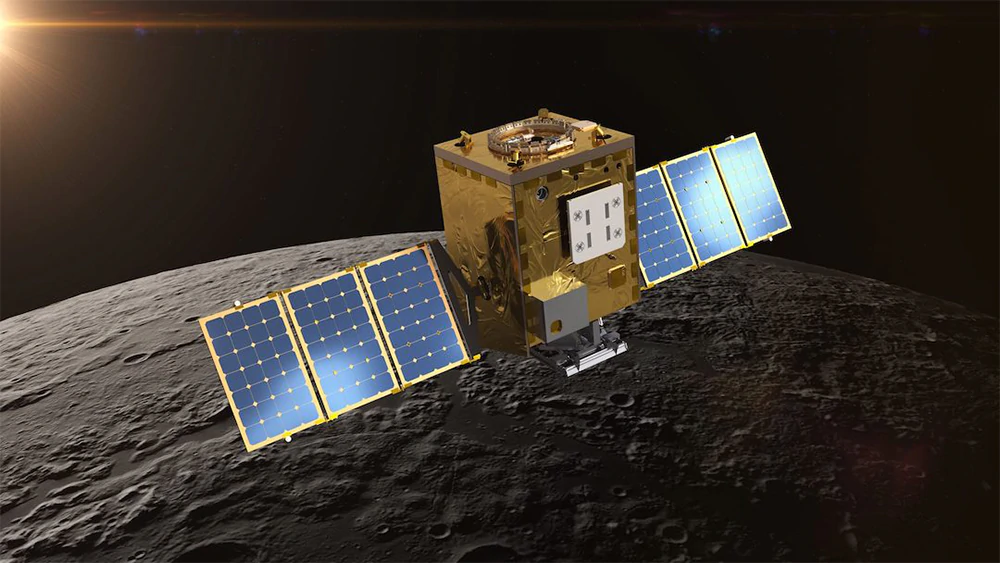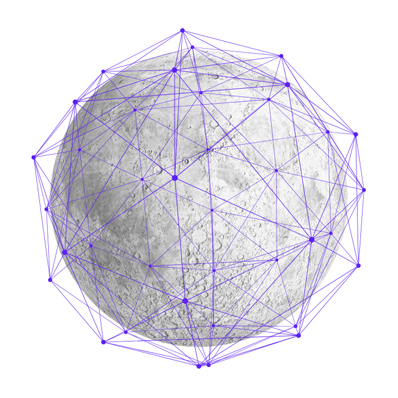If humanity is going to have a long-term presence on the Moon, it's going to need reliable communications, and the internet.
The Lockheed Martin Corporation is an U.S. aerospace, arms, defense, information security, and technology corporation with worldwide interests.
Formed by the merger of Lockheed Corporation with Martin Marietta in March 1995, Lockheed Martin is also one of the main contractors for National Aeronautics and Space Administration (NASA).
To bring stable communication to the surface of the Moon, the company announced that it has created a subsidiary company devoted to lunar infrastructure, Crescent Space.

And this company's first project, is to bring Moon-to-Earth satellite network, it calls the 'Parsec.'
The plan is to use a constellation of small lunar satellites to provide a continuous connection between Earth and the people and assets in lunar orbit, as well as everyone that happens to be on the surface of the Moon.
The lunar satellites are planned to be built on Lockheed Martin's existing Curio small satellite platform, which has the size of a suitcase.
According to Lockheed Martin, the system could prove vital to those on lunar soil.
This is because Parsec uses nodes to create a lunar equivalent to a GPS. This should give astronauts their exact positions and directions.
A manned mission on the surface of the Moon, for example, would know how to return to base without driving into a dangerous crater or ever encountering a lunar cliff.
In particular, the constellation of small lunar satellites should be useful since it would also bring communications to the dark side of the Moon, the section of the Moon that is always facing away from Earth.
In all, the technology should humanity explore the vast space, to and from the Earth's only natural satellite, and anything in between.

Crescent's first Parsec nodes should be operational by 2025, with Lockheed Martin providing the satellites.
Parsec is planned to be launched ahead of NASA’s third Artemis mission, which should land humans back on the Moon again.
With Artemis itself, NASA hopes to build LunaNet, the framework and protocol for an internet on the Moon. At the same time, the European Space Agency plans to build a telecommunication and positioning network around the Moon, under Project Moonlight.
What this means, there is a clear race to the Moon that includes both national and commercial efforts from the U.S. and China, as well as private projects like SpaceX's lunar tourism.
And since Crescent is a commercial company, and Parsec could help Lockheed Martin profit from that rush without disrupting its existing businesses on Earth.

"Crescent is well positioned to serve the upcoming wave of lunar science and exploration missions, including NASA’s crewed Artemis moon landings," said CEO Joe Landon (formerly a Lockheed Martin Space VP)
"With Lockheed Martin’s investment and access to its technical capabilities and deep space experience, Crescent is set up to ensure Parsec will be ready to provide reliable and affordable communications services for our customers."
In conclusion, Crescent Space’s Parsec network is a significant step towards establishing reliable communications and navigation systems on, and from the Moon.
With the increasing interest in lunar exploration from an increasing number of parties, Lockheed Martin Corporation is well-positioned to capitalize on this opportunity and provide essential services to space explorers.
Besides Parsec, Crescent Space also plans for more projects, like provide other infrastructure services, including power and mobility.
Before, Lockheed Martin Space has delivered 5G standards-compliant network solutions to provide secure, interoperable connectivity across terrestrial and space-based networks.